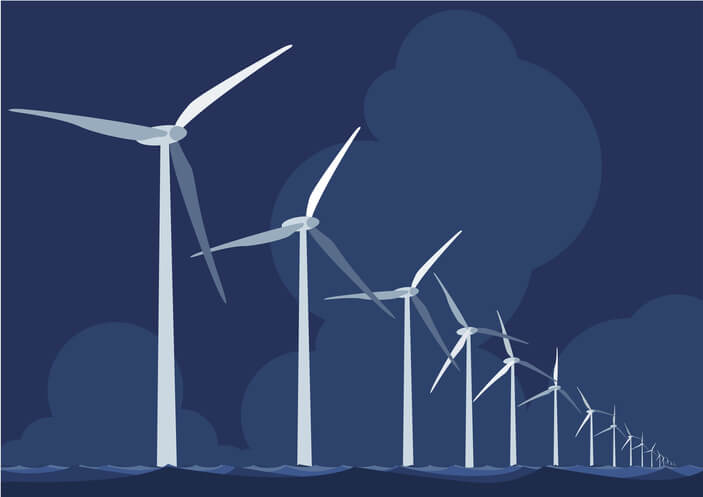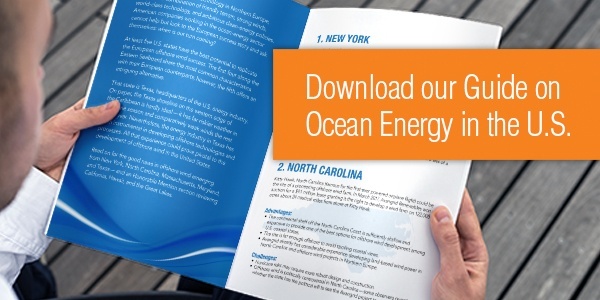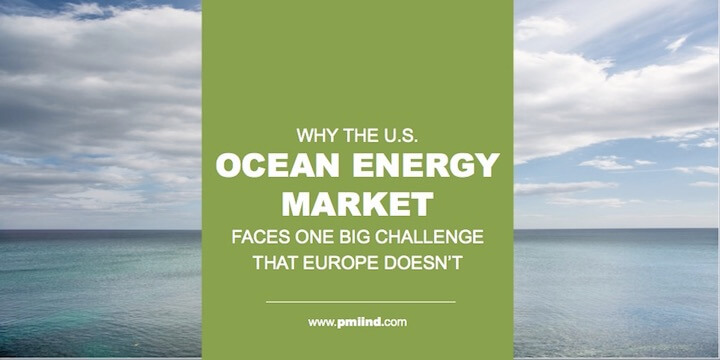There’s nothing quick about developing an offshore wind farm. It takes years of site selection, political and financial wrangling, environmental reviews, and careful construction to make it all happen. But those timelines could be getting shorter thanks to developments in the European offshore wind market.
An article in IEEE Spectrum in June 2017 noted a major breakthrough: Three new German projects are expected to be built without government subsidies — a first in the history of European offshore wind. Indeed, the scope and scale of North Sea wind farms is growing so fast and costs are falling so quickly that subsidy-free projects are happening much sooner than anybody anticipated.
“We’re three to four years ahead of schedule,” Bent Christensen, who is responsible for energy-cost projections for Siemens’ wind power division, said in the IEEE Spectrum report.
Admittedly, there’s a speculative component to the prediction of subsidy-free offshore wind power: It requires turbines that generate 13 to 15 MW, which aren’t on today’s market (the biggest turbines generate about 8 MW). IEEE Spectrum says those turbines may be seven or eight years in the future.
Reviewing the key phases of the offshore wind timeline
With subsidy-free power in the picture within a decade, developers, regulators, and manufacturers will be looking for ways to shrink the offshore wind timeline in each of its four key phases. Here’s a quick review of those phases:
- Establishing offshore wind regions: This is where government regulators identify sites that hold the most promise for offshore wind production. Studies measure the areas with most reliable wind resources and least environmental impacts. In Europe, France is seen as one of the next great offshore locales thanks to its shorelines in the North Sea, Atlantic Ocean, and Mediterranean Sea.
- Offering leases and requesting bids: Next, developers get an opportunity to lease specific sections for wind farm development. Here, utilities and regulators coordinating the arrival of the power on the mainland request bids from wind farm developers. Before preparing their bids, the developers conduct wind tests, dig bore holes and survey the sea floor to find optimum areas for development.
- Developing wind farm sites: The company with the winning bid starts developing the site in more detail. It’s time to identify precisely where the individual wind turbines will be installed and figure out which vendors will supply them. Here, cumulative advances in technologies and techniques learned at existing sites pay dividends by showing developers where they can chip away at time-consuming processes. Of course, anything in the plans that present potential risks to ecosystems, fisheries, tourism, and coastal views can bog down the development phase. Another major wrinkle is rounding up financing to get the projects built.
- Fabricate and construct wind farm: Mass production and standardization help developers rein in costs at the construction phase. This also is the phase where the weather starts to loom large. Though coastal storms can throw off timelines and potentially damage turbines during construction, advances in weather prediction technologies can help developers better prepare for severe weather.
Welcome news from European offshore wind
At PMI, we’re watching all these developments closely because we manufacture premium accessories for underwater cables that transmit electricity from offshore wind farms to the mainland power grid. We expect innovations in ocean renewables to be good for our business as well as the planet.
It’s true that offshore wind remains one of the most expensive renewable power sources, but costs are falling rapidly, according to IEEE Spectrum: Just four years ago, new projects were providing power at about €160 (US $179) per megawatt-hour amid hopes to reduce those costs to €100/MWh by 2020. Christensen of Siemens says prices are hitting that goal in 2017.
Ever-larger and more efficient wind farms should drive those costs lower in the years ahead, potentially attracting more investors, inventors and developers into the marketplace. This has the potential to motivate developers to shrink wind farm timelines as well.
On average, European offshore wind turbines stand in 29 meters (95 feet) of water about 44 kilometers (27 miles) from the shore, WindEurope reports. These two stats underscore one of the key reasons why offshore wind in U.S. waters is a flyspeck compared to the installed capacity of European wind farms.
The first U.S. offshore wind farm added a scant 30 megawatts of electrical capacity when construction wrapped up in 2016. By contrast, grid-connected capacity of European offshore wind farms rose by more than 1,600 MW in 2016 alone — with 338 new wind turbines expanding total capacity to 12,600 MW, according to WindEurope.
European leaders deserve plenty of credit for achieving bold offshore-wind goals, but that’s not the only force at work in Europe’s offshore-power dominance. The waters of the North, Irish, and Baltic seas tend to be shallow near the shoreline and fall gradually to maximum depths.
This is the optimum terrain for today’s offshore-wind technologies — and it’s abundant. By contrast, the entire west coast of the U.S. plunges deeply into the Pacific Ocean just off the shoreline. The continental shelf on the Atlantic Coast and the Gulf of Mexico is much larger and shallower, but the specter of summer hurricanes casts a cloud on projects in warmer southern climes.
In essence, the most promising proposals for wind farms in U.S. waters lie in the cooler waters from the Carolinas northward to Maine. These waters boast a gently sloping continental shelf, much like the areas dotted with wind farms off the coast of Northern Europe. And while these northern waters are no strangers to fierce storms, they generally do not experience the destructive force of hurricanes.
 Turning to deep-water development
Turning to deep-water development
Europe’s massive lead over North America in offshore wind shouldn’t obscure one central fact: European countries have fulfilled only a fraction of their offshore-wind power goals. And, like an apple tree bereft of low-hanging fruit, they have already developed many of the most valuable offshore-wind sites.
As offshore wind projects move farther from the coastline in Europe, naturally the water gets deeper. Soon, the fixed foundations for wind turbines will become prohibitively difficult to manufacture and install. This challenge invites the development of floating offshore wind platforms.
Floating platforms sound promising on paper, but only a few demonstration projects have gotten off the drawing board. But that could rapidly change in the space of a few years, according to WindEurope, the trade association for European wind power.
In a report issued in June 2017, WindEurope stated that floating platforms are ready for commercial development, and that costs could soon plunge as the technology enters the mainstream.
“Floating offshore wind offers a vast potential for growth,” WindEurope said. “80% of all the offshore wind resource is located in waters 60m and deeper in European seas, where traditional bottom-fixed offshore is less attractive. At 4,000 GW, it is significantly more than the resource potential of the U.S. and Japan combined.”
The report listed seven floating-platform projects in the works in Scotland, Ireland, Portugal, France, and the UK with nearly 350 MW of capacity that are expected to be commissioned in the next four years.
Taking a cue from offshore oil development
PMI has long provided premium cable accessories to oil-development companies, so we have a healthy respect for the difficulties in extracting energy from the deep ocean. And we’ve admired the ability of our industry partners to overcome these challenges.
But accidents happen despite the best efforts of the industry. Though floating offshore wind farms pose their share of environmental threats, there’s little chance of them being blamed for massive oil spills.
That’s one of the best reasons to be optimistic about the potential of offshore wind in the U.S. And as European developers build out floating platforms and drive down costs, American developers would be well advised to take advantage of the inevitable innovations that emerge.





